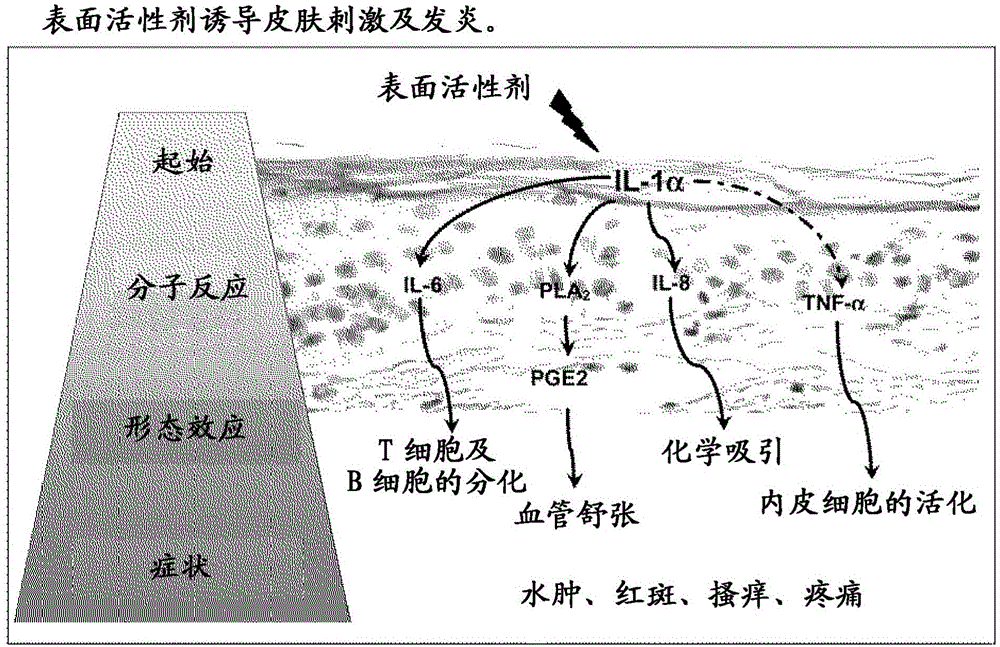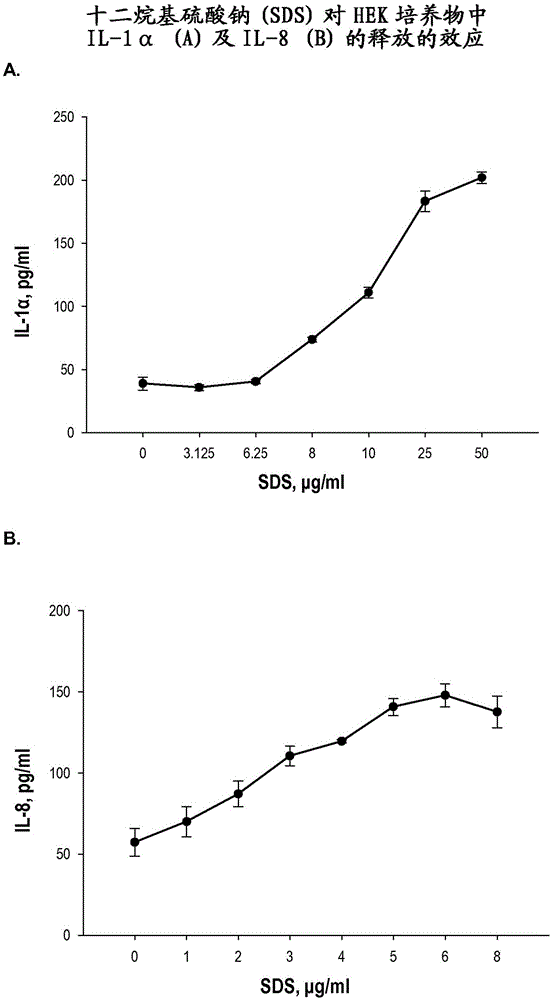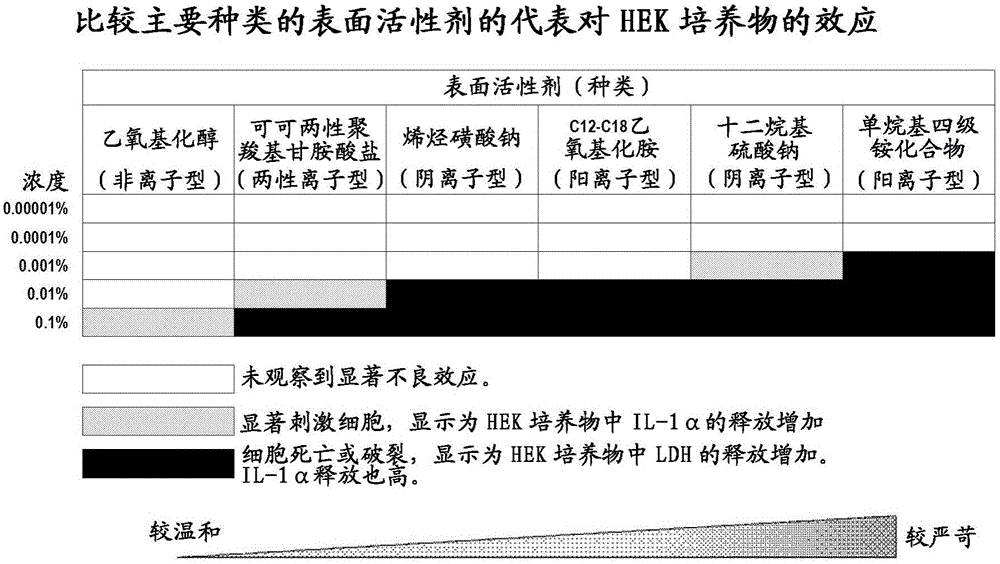Bioactive botanical compositions and uses thereof
A technology of biological activity and composition, which is applied in the direction of drug combination, plant raw materials, plant/algae/fungus/moss components, etc., and can solve problems such as inflammation and skin irritation
- Summary
- Abstract
- Description
- Claims
- Application Information
AI Technical Summary
Problems solved by technology
Method used
Image
Examples
Embodiment 1
[0092] Example 1. Sodium dodecyl sulfate (SDS) as a benchmark anionic surfactant induces the inflammatory cytokine IL-1α and the chemokine IL-1α in a dose-dependent manner in human epidermal keratinocyte (HEK) cultures 8.
[0093] Sodium dodecyl sulfate (SDS) is an anionic surfactant widely used in personal care and cleaning products. SDS, a well-known inducer of experimental stimuli contact dermatitis, has been shown to stimulate the release of various cytokines in epidermal skin cells, including IL-1α and the chemokine IL-8 (Craig et al., JID 115:292, 2000; and Chung et al., JID 117:647, 2001). To validate a cell culture model for assessing surfactant-induced inflammatory responses, SDS was used as a baseline anionic surfactant to induce inflammatory mediators (including IL-1α and IL-8) in HEKs.
[0094] The protocol for growth and processing of human primary dermal keratinocyte (HEK) cultures is as follows. HEK and all cell culture supplies were obtained from Life Techno...
Embodiment 2
[0096] Example 2. Comparison of mildness of selected commercially available surfactants including SDS based on cytotoxicity and release of IL-1α
[0097] To evaluate the ability of different classes of surfactants to induce skin cell damage and inflammation, four different classes of commercially available surfactants were tested based on cytotoxicity data from LDH assays and induction of the release of the primary inflammatory cytokine IL-1α in HEK. 6 representatives of active agents were rated.
[0098] A protocol for HEK growth is described in Example 1. A range of concentrations of 6 different surfactants were used instead of SDS.
[0099] Such as image 3 Surfactants tested are listed in order of increasing causticity as shown in : Alcohol Ethoxylate, Cocoamphopolycarboxyglycinate, Sodium Olefin Sulfonate, C12-C18 Ethoxylated Amine, Lauryl Sodium sulfate, monoalkyl quaternary ammonium compounds. Concentrations given are percentages in HEK medium (KGM) assuming 100% "a...
Embodiment 3
[0100] Example 3. Ethoxylated alcohols as examples of non-ionic surfactants induce dose-dependent release of IL-la but not IL-8 in HEK.
[0101] Based on the mildness ratings for the surfactants in Example 2, the ethoxylated alcohols were rated as the mildest surfactants tested. It is widely used in general purpose and high pressure cleaning formulations and in household hard surface cleaning. Its functions include detergent, emulsifier, microemulsification and wetting. Therefore, ethoxylated alcohols, which are representative mild nonionic surfactants, were tested to induce the inflammatory cytokine IL-la and the chemokine IL-8 in HEKs.
[0102] A protocol for HEK growth is described in Example 1. Instead of SDS, keratinocytes were exposed to a range of concentrations of ethoxylated alcohols for about 16 hours.
[0103] Such as Figure 4 As shown in , ethoxylated alcohols at 500-1000 μg / ml showed significant (p<0.001 ) induction of IL-1α. This concentration range was use...
PUM
 Login to View More
Login to View More Abstract
Description
Claims
Application Information
 Login to View More
Login to View More - R&D
- Intellectual Property
- Life Sciences
- Materials
- Tech Scout
- Unparalleled Data Quality
- Higher Quality Content
- 60% Fewer Hallucinations
Browse by: Latest US Patents, China's latest patents, Technical Efficacy Thesaurus, Application Domain, Technology Topic, Popular Technical Reports.
© 2025 PatSnap. All rights reserved.Legal|Privacy policy|Modern Slavery Act Transparency Statement|Sitemap|About US| Contact US: help@patsnap.com



